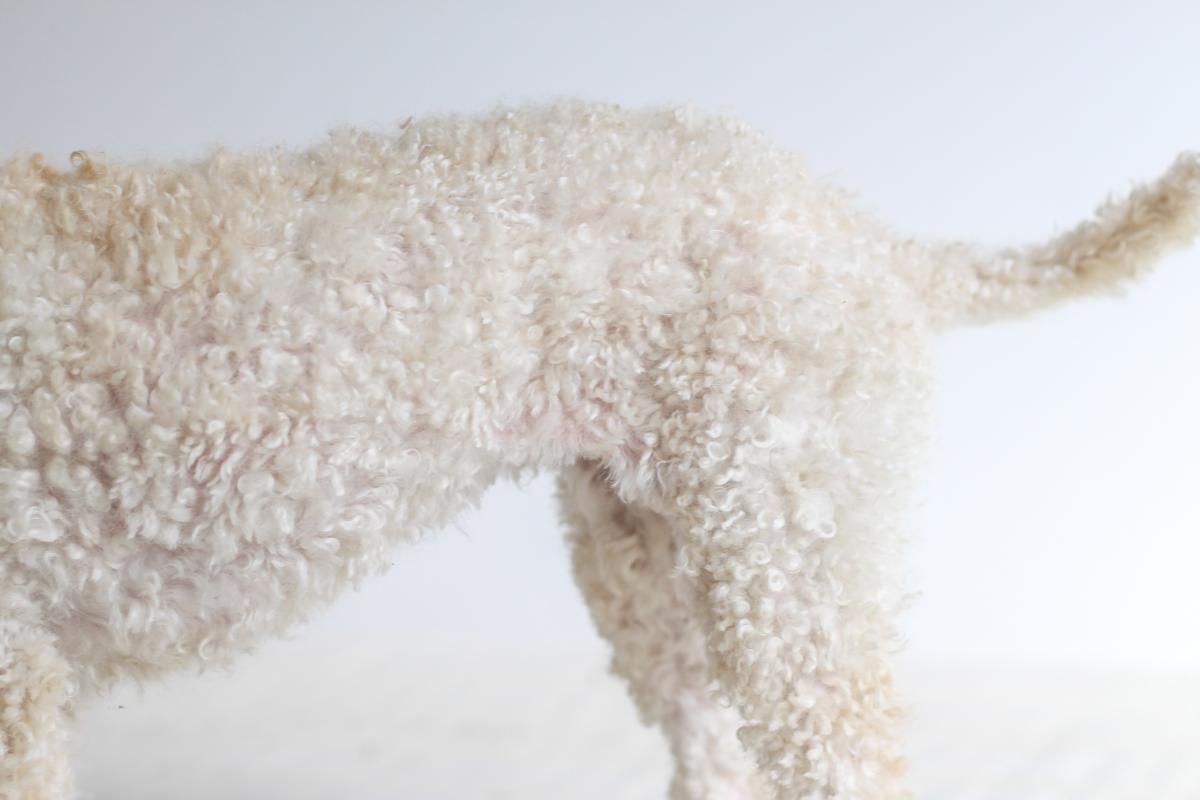If you dream of falling in love with your own companion dog but worry about allergens and picking dog hair off your clothes? You’ve come to the right place. When selecting the right dog for your lifestyle, there’s a bit more to investigate than a list of breeds that don’t shed. Here are some key things to keep in mind during your search for the right breed for you.
Fur Growth in Dogs
Dog fur and human hair are similar. You may have noticed, though, that some dog’s fur stops growing at a certain length whereas your own hair needs to be cut regularly. A dog’s fur growth can be categorized as either short-cycle or long-cycle.
Short-Cycle Growth

Dogs with this type of fur shed year-round, along with a possible seasonal shedding. Unlike human hair, this type of fur has a specified length where it stops growing and sheds, allowing a new strand to replace it. Some dogs even grow an additional coat during cold months that are later shed as the weather warms in the spring.
Long-Cycle Growth
Dogs with a long-cycle growth coat have fur that’s more like human hair. It grows continuously and needs to be clipped or trimmed regularly. These dogs still shed, but not as often as short-cycle furs. Non-shedding dogs fall into this category. Due to retaining their fur longer, the dog needs to be trimmed or shaved several times during the year.
Grooming Non-Shedding Dogs
Regular brushing and bathing will reduce shedding in all dogs, no matter their coat type. That said, there’s no dog breed that doesn’t need some sort of grooming. Even low and non-shedding dogs require regular bathing, brushing, and trimming. Letting a dog’s fur get too long can result in matting and tangled fur.
If you are searching for a non-shedding dog for allergy reasons, it’s probably in your best interest to hire someone to groom your dog. Grooming the dog yourself exposes you to dander, which is the primary cause of dog allergies. Even a small amount of dander can result in a potential allergy attack.
12 No-Shed Dog Breeds
If you’re looking for a dog that sheds very little, take a look at the list below. While no breed is 100% hypoallergenic, the following are more suitable for allergy sufferers.
| Small Breeds | Grooming Frequency | Coat Type | Trim Frequency |
| Bichon Frise | High | Double, Short & Long | 1-2 months |
| Cairn Terrier | Medium | Double, Wire | 2-3 months |
| Chinese Crested Dog | Very Low | Hairless | Never |
| West Highland White Terrier | Very High | Double, Short & Long | Weekly |
| Medium Breeds | Grooming Frequency | Coat Type | Trim Frequency |
| Basenji | Very Low | Smooth, Short | Never |
| Schnauzer | Medium | Double, Wire | 2-3 months |
| Tibetan Terrier | Very High | Double, Short & Long | Weekly |
| Soft-Coated Wheaten Terrier | High | Soft, Thick Hair | 1-2 months |
| Large Breeds | Grooming Frequency | Coat Type | Trim Frequency |
| Airedale Terrier | Medium | Double, Wire | 2 months |
| Irish Water Spaniel | Low | Double, Curly | 2 months |
| Saluki | Low | Smooth or Feathered | Never |
| Standard Poodle | High | Thick, Curly | 3-6 weeks |
Choosing a Non-Shedding Dog

Before adopting your pup, it’s a good idea to research the fur types of dogs you are most interested in. Keep in mind that some coat types can be difficult to maintain without the assistance of a professional dog groomer. If your dream dog requires regular visits for clipping, stripping, or trimming, don’t forget to include those costs in your budget.
While many owners opt for non-shedding dogs due to allergies or easier house cleaning, these dogs are not technically “hypoallergenic.” This is because most people with dog allergies react to canine dander and saliva, not fur. All dogs, even hairless ones, produce dander, so keep this in mind when choosing your breed.
If you’re someone who’s allergic to dogs but looking to adopt one, try spending time with your breed of choice before adoption. If possible, visit a breeder’s home or foster a dog within that breed to see how you react. This will act as a “trial run” and allow you to determine whether or not your allergies can tolerate that breed.
A Note on Hypoallergenic Dogs
The term “hypoallergenic dog” first surfaced in the late 20th century, and few studies have determined whether any single dog breed produces fewer allergens than another. In fact, all dog breeds release a similar amount of allergens into the home environment. No dog breed has been found to be completely hypoallergenic.
Unfortunately, no dog is 100% shed-free, and you won’t find a breed that does not require regular grooming. Even low and non-shedding dogs often require a significant amount of grooming. So, if you are looking for a low-maintenance dog, read carefully about each breed to see if grooming time will be affected.
Ready to adopt your non-shedding dog? Find one on Lancaster Puppies today!
